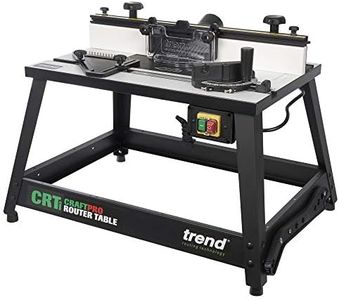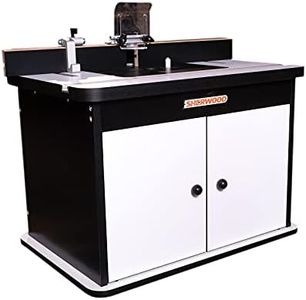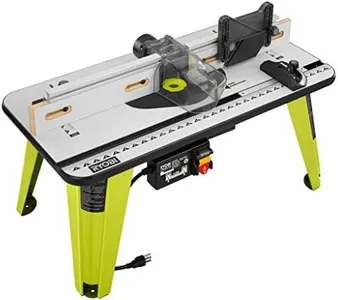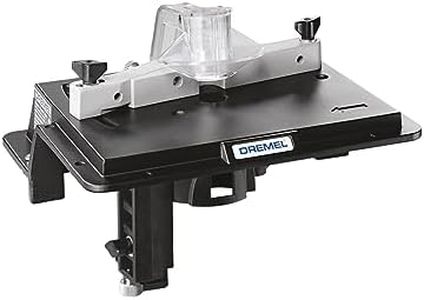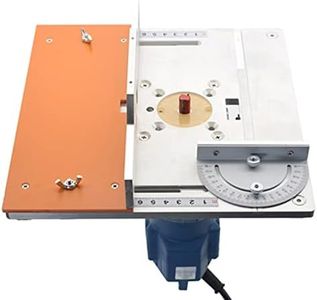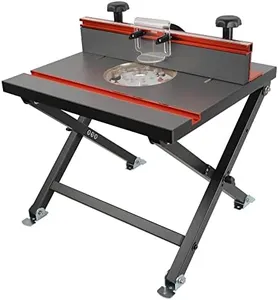We Use CookiesWe use cookies to enhance the security, performance,
functionality and for analytical and promotional activities. By continuing to browse this site you
are agreeing to our privacy policy
6 Best Cheap Router Table
From leading brands and best sellers available on the web.Buying Guide for the Best Cheap Router Table
Choosing a router table can have a big impact on your woodworking results and overall ease of working with a router. It's not just about picking what's cheapest—think about stability, compatibility with your tools, safety, and how often you'll use it. The right router table helps you work more accurately and safely, so knowing how to balance essential features with your own usage needs is key.Table Top MaterialThe table top material affects how durable, stable, and smooth your work surface will be. Table tops often come in MDF, phenolic, or metal. MDF is common in more affordable tables and is perfectly suitable for light and occasional use, though it's sensitive to moisture. Phenolic is more durable and smoother, which provides better sliding for your workpieces. Metal tops, like aluminum, are the sturdiest and resist warping or damage, especially for heavy or frequent use. Pick the material based on how often you plan to use the table and whether you need superior durability.
Fence Quality and AdjustabilityThe fence keeps your wood aligned and steady as you work, so its quality and ability to be adjusted matter a lot. Simple fences may only move forward and back, while more advanced versions include fine-tuning adjustments or independent side adjustments for more accuracy. If you do mainly simple, straight cuts, a basic, sturdy fence may suffice. For more complex projects requiring repeated precision, look for a fence that allows easy and accurate adjustments.
Compatibility with RoutersNot all router tables fit every type of router, so be sure your table works with the router you have or plan to get. Some tables offer universal mounting plates, while others are designed for specific brands. If you already own a router, check if the mounting plate holes match up, or if the table comes with adapters. If you don't have a router yet, look for flexibility—universal plates let you upgrade tools in the future without hassle.
Stability and Base ConstructionA stable base means your table won't wobble or move during use, which is critical for both safety and precision. Lower-priced router tables might have lighter or smaller bases, which are fine for light use or smaller projects, but can become shaky with bigger jobs. If you often work with larger or heavier pieces of wood, a heavier, more solid base is a better choice, even if it's bulkier.
Dust Collection OptionsRouter tables create a lot of dust, and having a good way to collect it makes woodworking safer and keeps your workspace clean. Entry-level tables may offer a simple dust port, while some go further with a collection box or more advanced systems. If you work indoors or care about cleanup, prioritize a dust collection feature that fits your existing vacuum or dust collector.
Size and PortabilityRouter tables come in benchtop (small, portable) and full-size (larger, stationary) versions. Benchtop models are easy to move and store, perfect for small workshops or occasional use. Full-size tables offer more working space and stability for frequent or larger projects, but take up more room. Consider your workspace, how much you're likely to move the table, and what size projects you'll usually handle.
